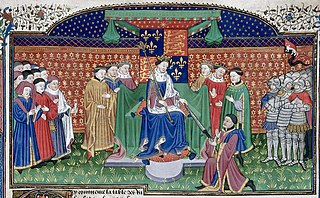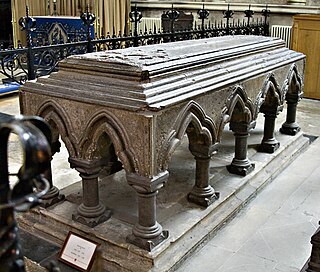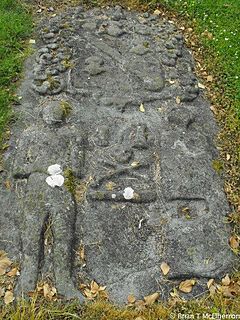Related Research Articles

John Stafford was a medieval English prelate and statesman who served as Lord Chancellor (1432–1450) and as Archbishop of Canterbury (1443–1452).
Philip de Harcourt was a medieval Lord Chancellor of England and Bishop of Bayeux. He was unsuccessfully elected as the Bishop of Salisbury.
Nicholas of Ely was Lord Chancellor of England, Bishop of Worcester, Bishop of Winchester, and Lord High Treasurer in the 13th century.
Protodeacon derives from the Greek proto- meaning 'first' and diakonos, which is a standard ancient Greek word meaning "assistant", "servant", or "waiting-man". The word in English may refer to any of various clergy, depending upon the usage of the particular church in question.

Peter Courtenay was Bishop of Exeter (1478–87) and Bishop of Winchester (1487-92), and also had a successful political career during the tumultuous years of the Wars of the Roses.

Roger de Pont L'Évêque was Archbishop of York from 1154 to 1181. Born in Normandy, he preceded Thomas Becket as Archdeacon of Canterbury, and together with Becket served Theobald of Bec while Theobald was Archbishop of Canterbury. While in Theobald's service, Roger was alleged to have committed a crime which Becket helped to cover up. Roger succeeded William FitzHerbert as archbishop in 1154, and while at York rebuilt York Minster, which had been damaged by fire.

Sewal de Bovil was a medieval Archbishop of York.

William de la Zouche (1299–1352) was Lord Treasurer of England and served as Archbishop of York from 1342 until his death.
John Sherwood was an English churchman and diplomat.
Simon Langton was an English medieval clergyman who served as Archdeacon of Canterbury from 1227 until his death in 1248. He had previously been Archbishop-elect of York, but the election was quashed by Pope Innocent III.
Hugh Foliot was a medieval Bishop of Hereford. Related somehow to his predecessor at Hereford, he served as a priest and papal judge as well as being an unsuccessful candidate as Bishop of St David's in Wales. In 1219, he was appointed Bishop of Hereford. During his time in office, he mostly attended to ecclesiastical duties, but did occasionally serve as a royal administrator. He helped found a hospital and a priory, and died in 1234 after a months-long illness.
Robert Wickhampton was a medieval Bishop of Salisbury.
William de la Corner was a medieval Bishop of Salisbury, who fought a long but unsuccessful battle to become Archbishop of Dublin.
John of Pontoise was a medieval Bishop of Winchester in England.
William de Blois was a medieval Bishop of Worcester.

Richard Marsh, also called Richard de Marisco, served as Lord Chancellor of England and Bishop of Durham.
Roger Leyburn was an English churchman and academic, Master of Pembroke Hall, Cambridge, archdeacon of Durham and bishop of Carlisle.
Charles Booth, D.C.L. was a sixteenth-century clergyman who served as the Bishop of Hereford from 1516 to 1535.
Thomas de Stratford was a medieval Archdeacon of Gloucester of the Noble House of Stratford.

The Archdeacon of Kells, alias the Archdeacon of Nobber, was a medieval ecclesiastical post in the Diocese of Meath in the Kingdom of Meath, Ireland. The Archdeaconry was officially established sometime between the 11th and 13th centuries, and was annexed to the Rectory of Nobber. In the 16th Century, the office was briefly united to the Bishopric of Meath, but afterwards separated again. As a consequence of the Reformation, the Archbishop of Armagh held the "Archdeacony of Kells, in commendam 1569 to 1584". Sometime before 1622, the Archdeacon of Kells and Rectory of Nobber were permanently united to the bishopric of Meath.
